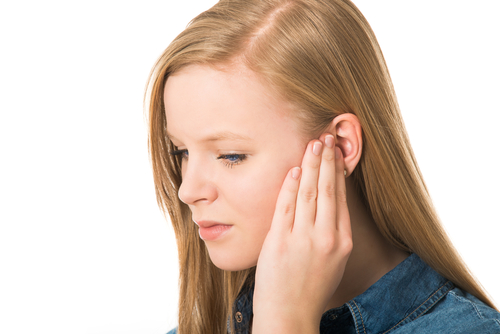DIAGNOSIS
Clinical history alone is not enough to make a diagnosis of acute otitis media as its manifestations are similar to other conditions.
- Must use pneumatic otoscope with a rubber bulb to see tympanic membrane.
- For assessment of tympanic membrane mobility.
- Acute otitis media in children with moderate to severe bulging of the tympanic membrane or new onset of otorrhea (drainage) is not due to external otitis. Also, the diagnosis may be made in children who have mild bulging of the ear drum and recent onset of ear pain (less than 48 hours) or intense erythema (redness) of the eardrum.
- Confirmation of diagnosis:
- Identification of middle-ear effusion and inflammation of the eardrum; signs of these are:
- fullness, bulging, cloudiness and redness of the eardrum.
- It is important to attempt to differentiate between acute otitis media and otitis media with effusion (OME), as antibiotics are not recommend for OME.
- Bulging of the tympanic membrane – BEST SIGN to differentiate AOM from OME.
- Viral otitis may result in blisters on the external side of the tympanic membrane, which is called bullous myringitis (myringa being Latin for “eardrum”).
- Acute otitis media
- The most common bacteria isolated from the middle ear in AOM are Streptococcus pneumoniae, Haemophilus influenzae, Moraxella catarrhalis, and Staphylococcus aureus.
- Otitis media with effusion
- also known as serous otitis media (SOM) or secretory otitis media (SOM), and commonly referred to as glue ear.
- a collection of effusion (fluid) that occurs in the middle-ear space due to the negative pressure produced by dysfunction of the Eustachian tube.
- From a viral URI or bacterial infection, or can precede and/or follow acute bacterial otitis media.
- Early-onset OME is associated with feeding of infants while lying down, early entry into group child care, parental smoking, lack, or too short a period of breastfeeding and greater amounts of time spent in group child care, particularly those with a large number of children, increases the incidences and duration of OME in the first two years of life.
- Chronic suppurative otitis media
- Involves a hole in the tympanic membrane and active bacterial infection within the middle-ear space for several weeks or more.
- There may be enough pus that it drains to the outside of the ear (otorrhea), or the pus may be minimal enough to only be seen on examination using the otoscope or, more effectively, with a binocular microscope.
- More common in persons with poor Eustachian tube function and very common in certain races such as Native North Americans.
- Hearing impairment often accompanies this disease.
- It is a primary cause of hearing loss that newly develops in children. An ear wick may be effective or, if not, antibiotics.
- Adhesive otitis media
- Happens when a thin retracted ear drum becomes sucked into the middle-ear space and stuck (i.e., adherent) to the ossicles and other bones of the middle ear.


